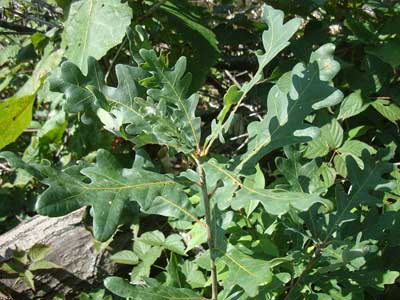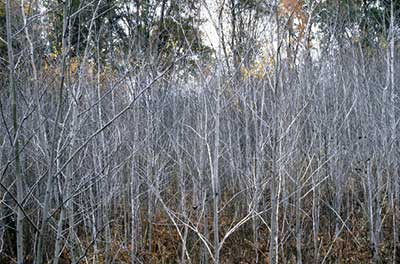
Command the Sun to Promote Young Forest
By Bill Kiser, Wildlife Biologist, US Fish and Wildlife Service, Partners for Fish and Wildlife Program
For plants, it’s all about sunlight: Where sunlight hits, plants grow. In a dense forest, most sunlight never gets past the tree canopy, producing little wildlife food and cover on the ground.
It makes sense, then, that many woodland wildflowers are spring ephemerals; they bloom and produce seed before the trees leaf out.

While short doses of sunlight are enough for some plants, most young trees and shrubs need openings in the canopy for the entire growing season to develop. This is certainly the case for oak, aspen, and many shrubs – the premier wildlife food and cover.
Many landowners create these openings through brush management (removing invasive species), timber stand improvement, prescribed burning, or some combination. Cost-share is available to support all of these activities.
Steps to fostering young woodlands
If you want to have young woodlands on your land, success will depend on three important components: placement, size, and age.
Placement
Know what you are “releasing” by creating a forest opening. It’s ideal to increase the amount of sunlight reaching desirable tree and shrub seedlings. Yes, you will likely get some red and black raspberries. But make sure some oak, aspen, hazelnut, or other longer-lived and desirable species will benefit from the opening.
If you are conducting a timber harvest over a large area, maybe you and your forester can select some small areas that are completely cleared to regenerate sun-loving species and create “brushy” habitat. Another strategy is to identify areas where desirable species are not present and plant them in the opening you create.
Size
Small areas are all you need. Two-acre openings in your woods (about 300 feet by 300 feet) provide enough sunlight to regenerate oak, aspen, and many shrubs. Certainly these areas can be larger, especially if the focus is on tree regeneration. However, if the areas get larger than 10 acres, this starts to work against some of the benefits to wildlife with small territories and the final component of success: age.
Age
Openings of different ages provide a greater range of benefits. Young aspen and oak, less than 10 years in age, provide thick cover for wildlife breeding and escape. At 10 years old, the aspen have thinned out, but each tree is now producing lots of food (catkins) for wildlife. Oaks produce acorns between 20 and 30 years of age.
